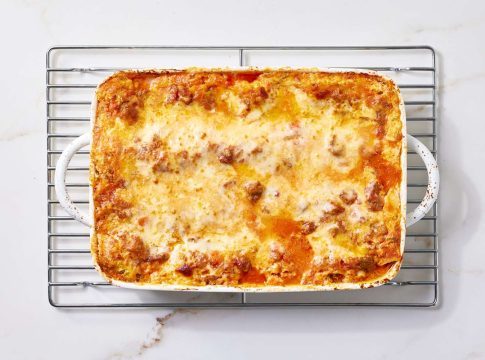Mastering the Art of Storing Hot Food: A Flavorful Guide to Safety
Ah, the culinary symphony of cooking! As delicious vapors swirl through your kitchen, it’s all too tempting to store those mouthwatering leftovers straight from the pot to the fridge. But hold on! Before you make that leap, let’s unveil the delicious truth about cooling and storing hot food.
The Great Debate: Hot vs. Cold
Contrary to popular belief, letting your food cool down on the countertop is a big no-no. While some might insist that a pot of steaming stew must remain on the counter, this slow cooling can be detrimental. As Vanessa Coffman, Ph.D., a food safety guru, explains, keeping food at room temperature allows foodborne bacteria to thrive—doubling in numbers every 20 minutes when they find a cozy spot in that sweet spot between 40°F and 140°F. Yikes!
Instead, what you want is to whisk your food out of harm’s way. Aim for that golden rule: cool to 70°F within two hours, then achieve the ultimate goal of 41°F or lower in the next four.
Cool it Right: Proper Storing Techniques
Divide and Conquer
One of the most effective tricks? Portion Control!
- Divide your dish into smaller containers. This not only increases the surface area, allowing heat to escape faster, but also ensures the food cools evenly.
- Opt for metal or glass containers—these materials are heat conductors that allow for quicker cooling compared to plastic, which can hold onto that heat like your grandma with a cherished recipe.
Ice Bath Magic
For the ultimate cooling hack, whip up an ice bath!
- Grab a clean sink or large pot, filling it with ice water.
- Submerge the container of hot food, making sure the cool water surrounds it without spilling in.
- Stir the contents frequently to release that trapped heat.
- Use a food thermometer to ensure it reaches a safe 70°F within two hours, refreshing the ice as needed.
This method is perfect for soups and sauces that thrive in liquid form, chilling without turning into a clumpy mess.
Quick Tips for Freezer Fans
Thinking of tossing that hot dish directly into the freezer for a quick freeze? Resist the urge! Not only can this raise the overall temperature inside the freezer, potentially thawing your other goodies, but it’s not worth the risk. Instead, let the food cool to 40°F first, and then let the frosty magic happen!
Time is of the Essence
Lastly, if you leave cooked food out, don’t stretch it beyond two hours—this is the maximum time it can safely stay at room temperature. And if the summer sun is shining, cut that time in half to just one hour.
Conclusion
With these sizzling tips, you can keep your culinary creations safe while preserving their delightful flavors. So next time you whip up a steaming pot of goodness, remember: cooling it safely means more flavorful feasts in the future! Happy cooking!

Covers wellness, nutrition, mental health, and daily life tips.
Bio: Talia brings a background in health journalism and holistic living to help readers live better, one tip at a time.

